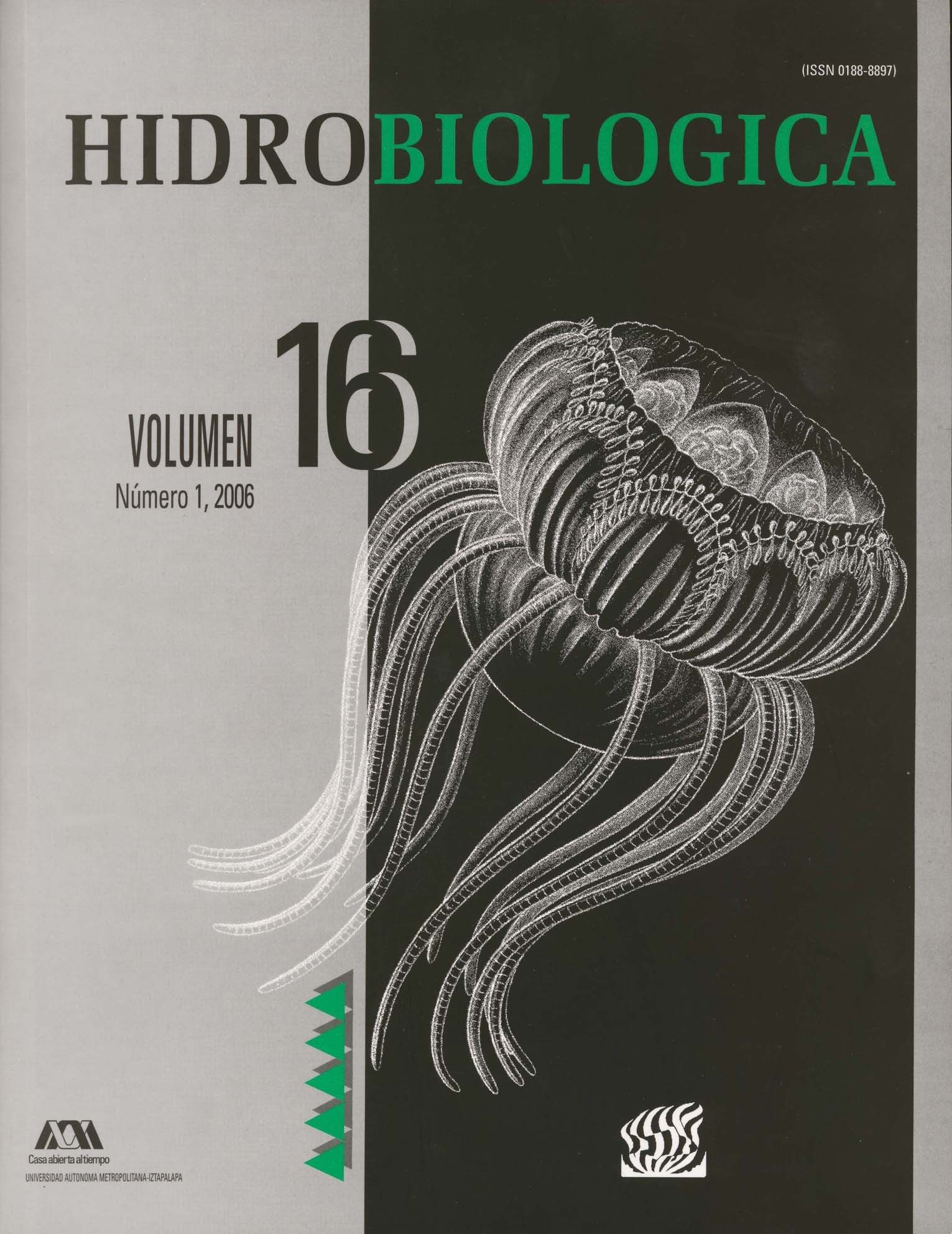Structure and distribution of diatom communities in sediments of a mangrove system
Keywords:
Diatom, communities, mangrove, diversity, distribution.Abstract
The structure of diatom communities from the sediments bordering the mangrove forest was determined for two periods (cool and warm) in five sites of Zona de Canales, and in a sixth site in the San Carlos area within the Magdalena-Almejas lagoon system. 325 taxa were identified at the species, variety and form levels. The greater number of species were represented within the genera: Navicula (33), Amphora (31), Nitzschia (26), Cocconeis (16) y Lyrella (15). The surveyed communities are composed mainly by a mixture of episammic and epipelic taxa. The distribution of dominant (highly) abundant and abundant species was very much continuous, in both periods and sampling sites. Out of the 24 most important taxa in terms of their abundances and frequencies (BVI), eight occurred in both periods. Diversity values (H y 1-?) were high in the six sampling sites during the two periods and showed no significant differences (? = 0.05) by site or date of sampling. Although the San Carlos site did not vary significantly from Zona de Canales (ZC) sites, in terms of diversity, it does in its species composition. The absence of Lyrella and Mastogloia species from this site, while being conspicuous in ZC is underlined. The diatom assemblages in the mangrove sediments of ZC in Bahía Magdalena are characterized by high species richness and diversity, homogeneously distributed, both temporally and spatially.Downloads
Downloads
Published
How to Cite
Issue
Section
License
Los autores/as que publiquen en esta revista aceptan las siguientes condiciones:
De acuerdo con la legislación de derechos de autor, HIDROBIOLÓGICA reconoce y respeta el derecho moral de los autores, así como la titularidad del derecho patrimonial, el cual será cedido a la revista para su difusión en acceso abierto.
Publicar en la revista HIDROBIOLÓGICA tiene un costo de recuperación de $500 pesos mexicanos por página en blanco y negro (aproximadamente 29 dólares americanos) y $1000 pesos por página a color (aproximadamente 58 dólares americanos).
Todos los textos publicados por HIDROBIOLÓGICA sin excepción se distribuyen amparados bajo la licencia Creative Commons 4.0Atribución-No Comercial (CC BY-NC 4.0 Internacional), que permite a terceros utilizar lo publicado siempre que mencionen la autoría del trabajo y a la primera publicación en esta revista.
Los autores/as pueden realizar otros acuerdos contractuales independientes y adicionales para la distribución no exclusiva de la versión del artículo publicado en HIDROBIOLÓGICA (por ejemplo incluirlo en un repositorio institucional o publicarlo en un libro) siempre que indiquen claramente que el trabajo se publicó por primera vez en HIDROBIOLÓGICA.
Para todo lo anterior, el o los autor(es) deben remitir el formato de Carta-Cesión de la Propiedad de los Derechos de la primera publicación debidamente requisitado y firmado por el autor(es). Este formato se puede enviar por correo electrónico en archivo pdf al correo: enlacerebvistahidrobiológica@gmail.com; rehb@xanum.uam.mx (Carta-Cesión de Propiedad de Derechos de Autor).
Esta obra está bajo una licencia de Creative Commons Reconocimiento-No Comercial 4.0 Internacional.


